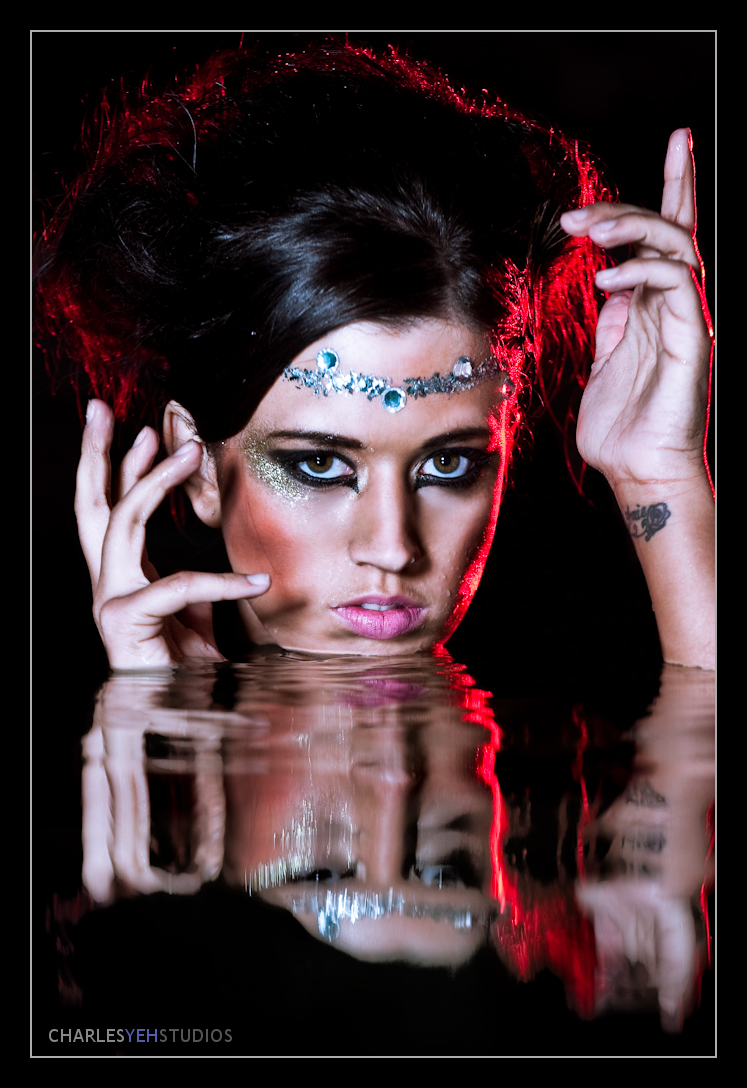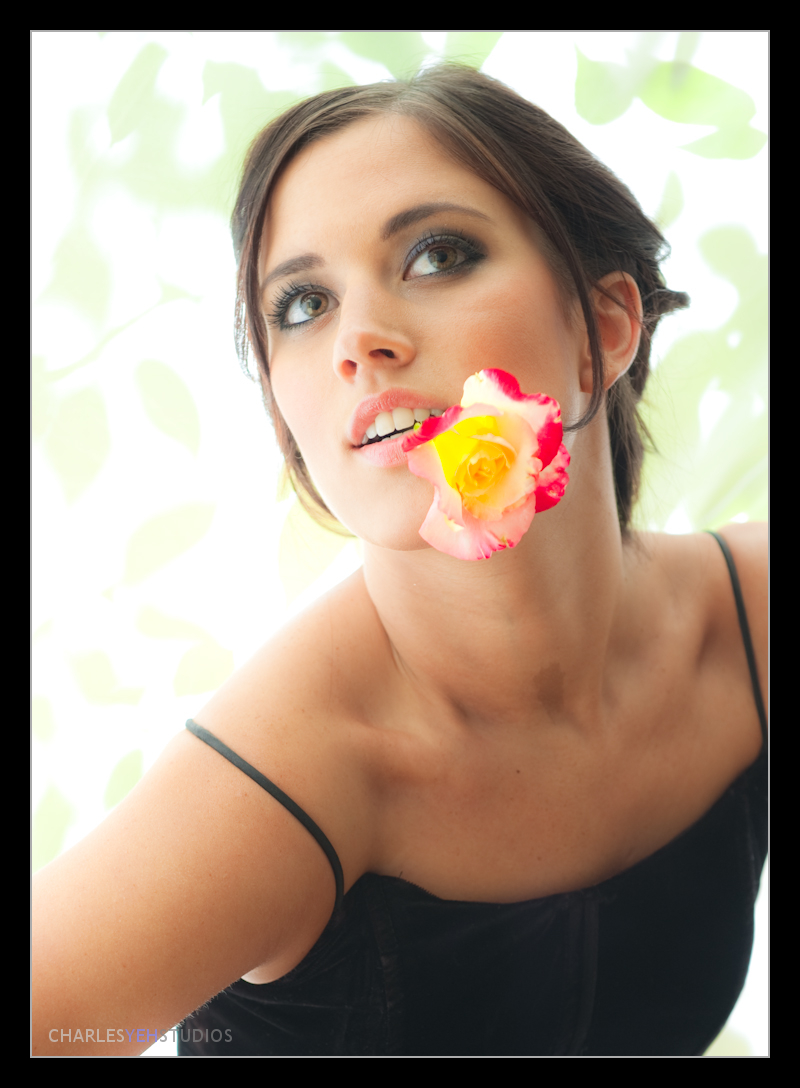I used to spend a lot of time researching and experimenting. Whether it was lighting or retouching, I would play around with it until I achieved something. Sometimes I would fail at recreating a particular look and sometimes I would succeed. Sometimes I would get sidetracked by something different that would catch my attention and pull me astray thus leading me to other discoveries that I had not thought of before.
Truthfully, I don't consider myself to be a very creative person. I work well within structure once I am given the rules of how things are "supposed to work" in this world. If the scope is too vast, I don't do well. This is why I excel at understanding lighting and the technical aspects behind photography, yet I'm not exactly on the "cutting edge" of art and new ventures.
With that said however I understand that I'm still getting the hang of things and that you have to know the rules before you can break them. It's sometimes so hard to be patient with myself because I'm so eager to push the envelope but sometimes at the cost of truly learning/understanding the fundamentals. I still remember when it would take me over an hour to set the lights for any particular shoot because I'd have to run back and forth to the camera (when shooting myself) to ensure that my exposures per light were correct. I'm glad I allowed myself that time to learn and grow because these days I don't have more than 10 minutes to get things down stat. Fortunately I can approximate the right exposure per light and then tweak from there.
Researching and constantly learning new skills however big or small has been a large part of my growth in photography. As I've mentioned in previous posts, David Hobby has been a huge influence in kick-starting my work with lights. Learning lighting opened my eyes to a world that I did not know existed before. It's kind of like when someone mentions a place that you'd heard of before but never knew exactly where it was located,
Friend: "Have you been to the Galapagos?"
Me: "Heard of it, never been there"
Friend: "You should definitely check it out, it's really beautiful out there!"
Me: "Send me the pictures from your trip when you get the chance..."
Upon seeing the pictures, I'm then blown away by the richness in the colors as well as the natural beauty of the landscapes, not to mention the wildlife that is abound at the Galapagos... of course I've never actually been to the Galapagos much less seen pictures of the islands but from what I remember Charles Darwin found many animal and plant species over there.
It's the same thing with experimentation. Just last week during Amber's shoot, her makeup artist Krystal suggested that we cut a few small branches from the tree outside and hold them against the bed sheet for the Anne Hathaway look. Initially, I had no idea what she was talking about. What would I do with tree branches behind the bed sheet? Curiosity won over my tendency to "stay the course" and minutes later I was clipping the tree in my front yard. Minutes later I was staring at the back of my camera looking at this:
I was blown away! The effect was awesome! Alone I would have never in a million years thought to try putting things behind the light source to create silhouettes much less tree branches. But my how it worked! The translucency of the bed sheet allowed some of the green to pass through the cloth and appear in the frames that we shot with Amber holding a rose in her mouth.
If necessity is the mother of all inventions, experimentation is undoubtedly the father of all inventions.
Another example occurred by pure accident when for whatever reason my main lights were off and the model (Stacy) was purely lit by kickers and a single hairlight. Seeing this on the back of my camera floored me! I felt sucker-punched by how much contrast there was in this lighting setup, so much so that we continued to shoot with this lighting over several more frames. Now a seasoned photographer might find this unamusing but I was thrilled when I saw this for the first time!
I could go on and on about other little discoveries that were made as a result of either research or experimentation. The point is that in order to grow and learn you must do both. Combined with asking the right questions and a little time to digest all you've discovered, you will grow in leaps and bounds.













